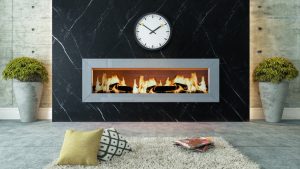There are many components working together in your HVAC system to guarantee the comfort of your indoor space. The electrical components are the most delicate and when improperly handled or installed, they might cause fires and a complete breakdown of your unit. The coil is one of the most important components of your system.
The two types of HVAC coils include condenser and evaporator coils. An evaporator coil vaporizes the compressed cooling chemicals, such as Freon in your system to allow them to absorb heat and cool your air. A heating and cooling company in Ontario will offer several evaporator coil options for your property’s cooling based on your needs. Here are some of them:
Vertical Evaporator Coils
These are used in vertical HVAC units. The units have a down/up flow since the air inside them moves up or down when passing through the evaporator coil. The vertical evaporator coil will condense the heat from the preprocessed air they receive into the water. The condensate flows out of the unit through a drain. This way, it does not affect your property’s humidity levels.
Cased Evaporator Coils
These are positioned horizontally and typically covered with a metal casing. Cased evaporator coils are the most commonly used in HVAC systems and function like vertical coils. They are smaller and more compact compared to vertical coils. They usually make a better fit for HVAC installation in limited spaces, especially if the unit’s configuration can support them.
They are also easier to install and last longer compared to the uncased type. There are three subtypes of cased evaporator coils, including A, N and slab coils. The A coils are usually used in vertical HVAC units while N and slab coils form part of horizontal units.
Uncased Evaporator Coils

These do not have an outer casing and can be used for both horizontal and vertical HVAC units. Due to their lack of a casing, the evaporator coils are easily customizable and can fit into virtually any position. Uncased evaporator coils are, therefore, the best choice for units in which the coil needs to be reconfigured to fit into them.
Finned Evaporators
These are a variation of uncased evaporators, which have fins on their external surface. They work in much the same way as uncased evaporators but are more efficient than the latter. Their increased efficiency results from the enlarged contact surface area of the air and metal tubing, which boosts the heat transfer rate. The fins can be soldered onto the coils’ surface or slipped over them.
Keeping your evaporator coils corrosion-free is essential to their proper functioning. As such, they should be cleaned twice or thrice annually. Some property owners might choose to clean the coils themselves, but expert cleaning is the ideal choice. DIY cleaning exposes you to electric shock; it might also damage the coils.
Expertly cleaned HVAC evaporator coils will minimize your indoor air’s humidity levels and significantly extend the longevity of your entire unit. They will also support free airflow and the maintenance of a healthy indoor environment.






